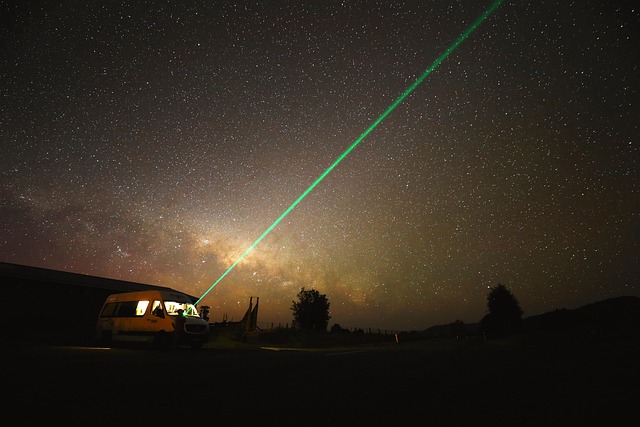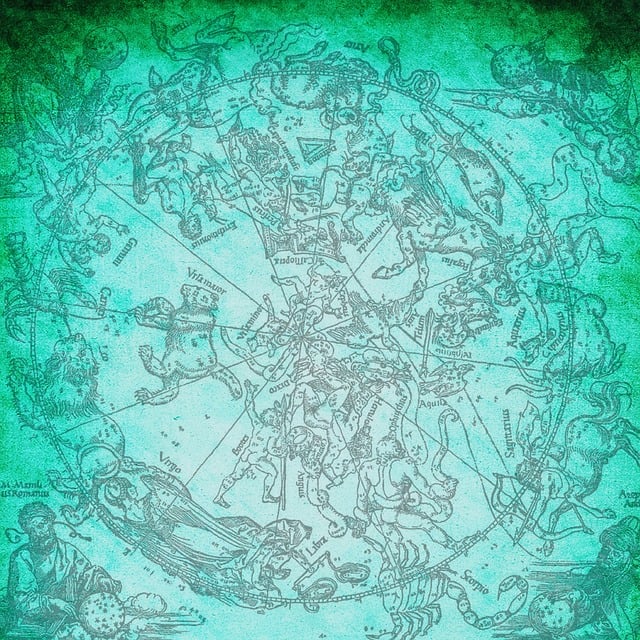Remember how I went completely down the rabbit hole researching where our zodiac signs actually come from? Well, plot twist: I’m apparently not done with my ancient astronomy phase. What started as a simple question about why Leo is a lion has turned into a full-blown obsession with how different cultures look at the exact same stars and see completely different stories.
It all started three weeks ago when I was outside with my neighbor Sarah (different Sarah from last time – I know too many Sarahs). We were both looking up at Orion – you know, those three stars in a row that are impossible to miss in winter. She’s half-Māori, and when I pointed out “the hunter,” she laughed and said, “That’s not a hunter. That’s a fishhook.”
Wait, what?
“In my culture, we call it Te Matau a Māui – Māui’s fishhook. He used it to pull up the North Island of New Zealand,” she explained, tracing the constellation with her finger.
I literally stood there with my mouth open. Same stars. Completely different story. And that’s when I realized I needed to figure out how many other stories I was missing.
The Research Spiral Continues
So naturally, instead of finishing the wellness article I was supposed to write (sorry, editor), I spent the next two weeks diving into cultural astronomy. My boyfriend found me at 2 AM last Tuesday surrounded by library books about Indigenous star knowledge, muttering something about “cosmic connect-the-dots.”
“Are you okay?” he asked, same concerned tone as when I was researching Babylonian priests.
“Did you know that the same constellation can be a hunter, a god, AND a canoe depending on who’s telling the story?” I replied, waving my notebook at him.
He just sighed and brought me chamomile tea. He’s learned not to interrupt my research phases.
What I Actually Learned About Constellations
Here’s the thing I didn’t realize: constellations aren’t just random patterns. They’re groups of stars that form recognizable shapes, but here’s the kicker – while the stars themselves are universal, what we see in them is completely cultural. There are 88 modern constellations officially recognized by astronomers, but the stories? Oh boy, the stories are endless.
The zodiac constellations that I wrote about in my previous deep dive into ancient astrology are just the beginning. Every culture has looked at the same sky and seen their own myths, heroes, and guidance systems.
I started a new Google Doc (because apparently I collect them now) called “Same Stars, Different Stories” and it’s already twenty-three pages long. My therapist says this is “healthy intellectual curiosity.” I think it’s advanced procrastination, but whatever works.
The Stories That Blew My Mind
Let me tell you about the three constellations that sent me deepest into this rabbit hole:
Orion: Hunter, God, or Fishing Equipment?
Ancient Greece: The Greeks saw Orion as this ultimate action hero – a larger-than-life hunter with his belt (those three bright stars), sword, and shield. He was basically the ancient version of a Marvel superhero, complete with an origin story about how he bragged too much and got taken down by a scorpion. Classic Greek tragedy vibes.
Ancient Egypt: But the Egyptians? They saw the same stars as Sah, a divine figure connected to Osiris, the god of death and rebirth. For them, Orion wasn’t about hunting – it was about guiding souls to the afterlife. The constellation’s position near the Milky Way (which they saw as a celestial Nile River) made it spiritually significant for temple alignments and sacred festivals.
Indigenous Australian Cultures: And then there are the Indigenous Australian interpretations that completely flipped my understanding. Many groups see Orion’s stars as a canoe carrying ancestral spirits across the sky. The Yolngu people view Orion’s belt as three brothers fishing in a canoe, connected to seasonal changes and community bonds.
I kept thinking about this while making coffee the next morning. Same three stars in a row, but to one culture they’re a belt, to another they’re a canoe, to another they’re fishing brothers. It’s like the ultimate cosmic Rorschach test.
Modern Astrology: In Western astrology, Orion isn’t technically a zodiac constellation, but it still carries weight. Its winter visibility makes it a symbol of strength and determination. I’ve started looking for it during my evening walks, and honestly? Sometimes I see the hunter, sometimes the canoe. Depends on my mood.
Scorpio: Cosmic Threat or Spiritual Healer?
This one really got me because Scorpio is my moon sign, and I thought I knew its story from my original zodiac research. Turns out, I knew maybe 30% of it.
Babylonian Mesopotamia: The Babylonians were among the first to name Scorpio, seeing it as a giant scorpion in the sky. It was tied to the goddess Ishhara (love, war, and transformation), and that bright red star Antares was used to predict everything from harvests to battles. Basically, Scorpio was a cosmic warning system.
Ancient Greece: The Greeks connected Scorpio to their Orion drama. When Orion got too cocky, Artemis sent a scorpion to take him down. Both were placed in the sky as a reminder about humility, positioned so they never appear together – when Scorpio rises, Orion sets. It’s like the ultimate cosmic restraining order.
Native American Cultures: But some Native American tribes, like the Navajo, saw these stars as part of a snake or serpent constellation, representing wisdom and transformation. Instead of conflict, it was about spiritual growth and healing. The focus shifted from danger to renewal, from individual drama to cyclical wisdom.
Chinese Culture: In ancient Chinese astronomy, Scorpio’s stars were part of the Azure Dragon, one of four celestial guardians. The dragon represents spring, growth, and protection. Antares wasn’t a warning – it was the dragon’s heart, symbolizing vitality and life force.
I spent an entire afternoon journaling about this. My Scorpio moon suddenly felt less like a cosmic threat and more like a spiritual teacher. Same stars, completely different energy.
Taurus: Divine Bull or Navigation Tool?
Ancient Mesopotamia: The Babylonians saw Taurus as a sacred bull, symbol of strength and fertility. It marked the spring equinox, signaling planting season – both practical and spiritual abundance.
Ancient Greece: The Greeks tied Taurus to Zeus transforming into a white bull to carry off Princess Europa. Classic Greek mythology – divine power meets romantic drama. The constellation’s bright star Aldebaran was the bull’s eye, a beacon of strength.
Polynesian Cultures: But in Polynesian star lore, particularly among the Māori, Taurus’s stars are part of Te Taura o te Waka o Rangi – the anchor rope of the great canoe of the sky god. It represents stability and connection to the divine, helping navigators cross the Pacific. Less romantic drama, more practical guidance.
Indian (Vedic) Astrology: In Vedic astrology, Taurus connects to the nakshatra Krittika, linked to the Pleiades star cluster. It symbolizes nurturing energy and creative power, tied to Agni, the goddess of fire. Grounded but creative, stable but dynamic.
I keep looking up at Taurus now and seeing all these layers. Bull, god, navigation tool, creative fire. It’s like the stars are multidimensional storytellers.
The Pattern I Started Noticing
After weeks of research (and probably too much coffee), I realized something. These weren’t just random different stories – they reflected each culture’s values and needs.
Survival-focused cultures saw navigation tools and seasonal markers. Warrior cultures saw heroes and conflicts. Spiritual cultures saw gods and afterlife guides. Agricultural societies saw planting calendars and fertility symbols.
The stars stayed the same, but the stories evolved with what people needed from them.
I wrote in my notes: “Maybe we don’t just see stars. Maybe we see ourselves reflected back.”
My therapist loved this insight. “You’re connecting with archetypal patterns,” she said. I nodded like I totally knew what that meant.
How This Changed My Relationship with Astrology
Remember how I was slightly embarrassed about checking my horoscope? Well, diving into these cultural interpretations has completely shifted my perspective. Understanding that the same stars have guided, inspired, and comforted humans across cultures for thousands of years makes astrology feel less like a guilty pleasure and more like… inheritance.
When I look at my Scorpio moon now, I don’t just think “intense and moody” (though, let’s be real, that’s still accurate). I think about transformation, wisdom, spiritual growth. I think about ancient Babylonian priestesses consulting Antares for guidance, or Navajo elders teaching about the serpent’s renewal cycle.
My Virgo sun isn’t just about perfectionism – it’s connected to harvest time, practical wisdom, the satisfaction of work well done. Same stars, deeper meaning.
What This Means for Modern Star-Gazers
Here’s what I keep coming back to: these ancient interpretations aren’t just historical curiosities. They’re invitations to see the stars – and ourselves – differently.
Maybe your Taurus energy isn’t just about being stubborn (though, if you’re like my Taurus friend Emma, it definitely includes that). Or Maybe it’s about being the anchor rope, the stable force that helps others navigate or Maybe your Scorpio intensity isn’t just emotional drama – maybe it’s transformative wisdom.
The stars give us a framework to reflect, dream, and find our place in the universe. Different cultures have found different meanings in the same sky, but they all found meaning. And that’s what matters.
My New Nightly Ritual
I’ve started ending my day by stepping outside and looking up – not at my phone, not at my horoscope app, but at the actual sky. I find Orion or Scorpio or whichever constellation is visible, and I think about all the different stories humans have told about those same stars.
Sometimes I see the Greek hunter and the Egyptian god and the Māori fishhook. It depends on what I need that night.
Last week, when I was stressed about a deadline, I looked up at Orion and saw the hunter – strong, determined, ready for action. The night after I finished the project, I looked up and saw the canoe – peaceful, communal, carrying me gently through the dark.
The Bigger Picture
This whole research journey has made me realize something profound: we’re all looking at the same sky, but we’re seeing reflections of our own hopes, fears, and dreams. The Babylonians needed seasonal guidance and divine warnings. The Greeks needed heroic stories and moral lessons. The Māori needed navigation tools and ancestral connections.
What do we need? Maybe connection, Maybe meaning or Maybe just the reminder that we’re part of something bigger than our daily stress about work emails and grocery lists.
The constellations are like a universal language, but one where every culture gets to write their own translation. And honestly? That’s beautiful.
What’s Next in My Star-Gazing Journey
I’m definitely not done with this research. Next up: I want to dive deeper into how these different cultural interpretations show up in modern astrology. Like, how does knowing that Scorpio was seen as a healing serpent change how we interpret Scorpio placements? What happens when we blend the Greek hero narrative with the Indigenous wisdom traditions?
Also, I’m planning to get that Vedic astrology reading I mentioned wanting. If I’m going to understand the stars, I might as well understand all the different ways people have learned to read them.
And maybe – just maybe – I’ll start a little moon circle with some friends. We can share different cultural stories about whatever constellation is prominent that month. Sarah (the Māori one) already said she’d teach us about Polynesian star navigation.
My boyfriend thinks I’m building a cult. I prefer to think of it as “expanding my cosmic perspective.”
The Takeaway
Same stars, different stories. That’s what I keep coming back to. Whether you see Orion as a hunter, a god, or a canoe of spirits, the act of looking up and finding meaning is deeply human. In a world that can feel fragmented and overwhelming, constellations remind us that we’re all under the same sky, sharing stories that have guided humanity for millennia.
For those of us who check our horoscopes and track our moon cycles, these cultural interpretations offer a way to connect with both history and self. Your Scorpio intensity might be ancient wisdom, your Taurus stubbornness might be ancestral strength or your Virgo perfectionism might be harvest-time practicality.
The stars have been telling stories for thousands of years, and they’re ready to whisper something new to you. What will you hear?



